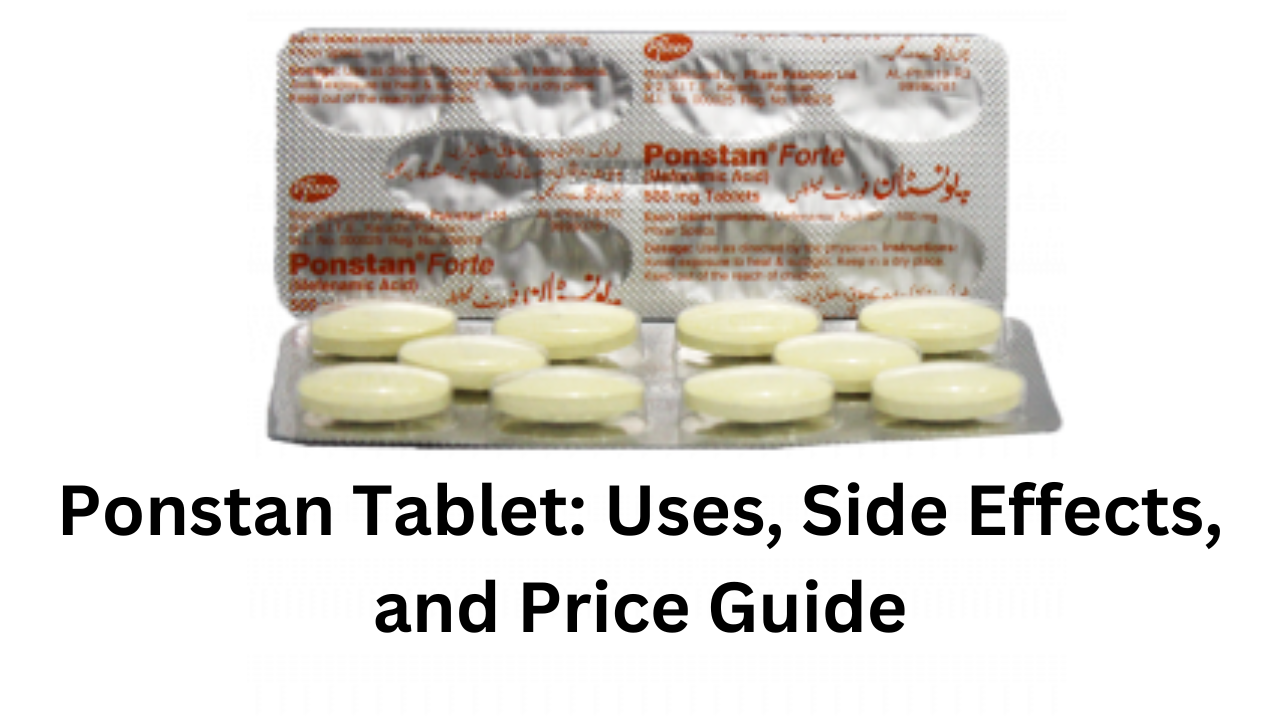Table of Contents
1. Introduction
2. Uses of Ponstan Tablet
2.1 Pain Relief
2.2 Menstrual Pain
2.3 Inflammation
2.4 Fever Reduction
3. How Ponstan Tablet Works
4. Dosage and Administration
4.1 General Dosage
4.2 Special Populations
5. Side Effects
5.1 Common Side Effects
5.2 Serious Side Effects
6. Precautions and Warnings
7. Interactions with Other Medications
8. Price and Availability
9. Conclusion
1. Introduction
Ponstan, also known by its generic name mefenamic acid, is a nonsteroidal anti-inflammatory drug (NSAID) commonly prescribed for pain relief and inflammation. This article aims to provide comprehensive information on the uses, side effects, and pricing of Ponstan tablets.
2. Uses of Ponstan Tablet
2.1 Pain Relief
Ponstan is widely used to alleviate mild to moderate pain. Its mechanism of action involves blocking the production of certain chemicals in the body that are responsible for pain and inflammation. This makes Ponstan effective in conditions such as dental pain, headache, and musculoskeletal pain.
2.2 Menstrual Pain
For women experiencing menstrual pain and discomfort, Ponstan can be a valuable option. It helps reduce the intensity of menstrual cramps by decreasing the production of prostaglandins, which are responsible for uterine contractions and pain during menstruation.
2.3 Inflammation
Ponstan is particularly effective in reducing inflammation. Conditions such as arthritis, including osteoarthritis and rheumatoid arthritis, benefit from the anti-inflammatory properties of this medication. It helps relieve joint pain and swelling associated with these inflammatory conditions.
2.4 Fever Reduction
In addition to its analgesic and anti-inflammatory effects, Ponstan also possesses antipyretic properties, meaning it can help reduce fever. This makes it a versatile medication for various conditions where fever is a symptom.
3. How Ponstan Tablet Works
Ponstan works by inhibiting the activity of an enzyme called cyclooxygenase (COX). This enzyme is involved in the production of prostaglandins, which are substances in the body that contribute to pain, inflammation, and fever. By blocking COX, Ponstan reduces the production of prostaglandins, leading to pain relief, decreased inflammation, and a reduction in fever.
4. Dosage and Administration
4.1 General Dosage
The typical dosage of Ponstan for adults is usually 500 mg to 1000 mg per day, divided into two or three doses. The severity of the condition being treated can influence the appropriate dosage, so it is important to adhere to the prescribed amount and not surpass the recommended limits in order to minimize the risk of potential side effects.
4.2 Special Populations
Dosage adjustments may be necessary for certain populations, such as the elderly or individuals with impaired renal function. Pregnant and breastfeeding women should consult their healthcare provider before using Ponstan, as it may have implications for the developing fetus or nursing infant.
5. Side Effects
5.1 Common Side Effects
While Ponstan is generally well-tolerated, some individuals may experience common side effects, including nausea, indigestion, abdominal pain, and headache. Typically, these side effects are mild and temporary, and they tend to disappear as the body becomes accustomed to the medication.
5.2 Serious Side Effects
In rare cases, Ponstan may cause more serious side effects, such as gastrointestinal bleeding, kidney problems, and allergic reactions. It is crucial to seek immediate medical attention if any unusual or severe symptoms occur.
6. Precautions and Warnings
Before using Ponstan, individuals with a history of gastrointestinal ulcers, kidney problems, or bleeding disorders should inform their healthcare provider. Long-term use of NSAIDs like Ponstan may increase the risk of cardiovascular events, so it's important to use the lowest effective dose for the shortest duration.
7. Interactions with Other Medications
Ponstan may interact with certain medications, including anticoagulants, antiplatelet drugs, and some diuretics. It is essential to inform your healthcare provider about all medications, including over-the-counter drugs and herbal supplements, to prevent potential interactions.
8. Price and Availability
The cost of Ponstan tablets can vary depending on factors such as the dosage strength, brand, and location. Generally, Ponstan is available as a generic medication, making it a more cost-effective option for many individuals. Consider consulting local pharmacies or online platforms to obtain the latest pricing information.
9. Conclusion
Ponstan tablets, containing mefenamic acid, are a valuable medication for pain relief, inflammation, and fever reduction. While it offers significant benefits, it is essential to use Ponstan with caution, adhering to prescribed dosages and considering potential side effects. Individuals should consult their healthcare provider for personalized advice and to discuss any pre-existing conditions or concerns. Understanding the uses, side effects, and pricing of Ponstan allows individuals to make informed decisions about its suitability for their health needs.
Disclaimer
The content offered on this blog is intended solely for general informational purposes. Professional medical advice cannot be substituted by it. It is essential to seek guidance from a healthcare professional for personalized advice regarding medication usage and potential side effects. We do not take responsibility for any actions taken based on the information provided on this blog.
Kindly be aware that the information presented here is gathered from diverse sources and domains, and we are not medical professionals. This blog aims to offer general knowledge and insights. For specific medical concerns, please consult with a qualified healthcare provider.



0 Comments